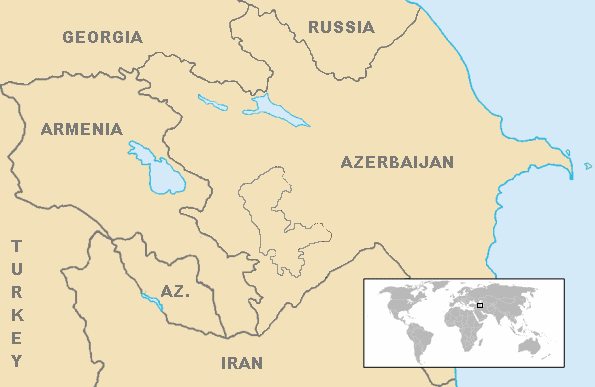Armenia and Azerbaijan have again agreed to honor a "humanitarian ceasefire" based on commitments made in Moscow earlier this month, according to a joint statement from the US State Department and the two governments.
The agreement was reached following intense negotiations, the US state department said, adding that the truce would come into force early on Monday.
Two previous ceasefires agreed earlier this month over the conflict were broken almost immediately.
Armenians took control of Nagorno-Karabakh and seven surrounding districts of Azerbaijan in a 1990s war amid the collapse of the Soviet Union. Fighting erupted on 27 September 2020. Azerbaijan President Ilham Aliyev, speaking earlier Sunday at a meeting of defense officials in Baku, said the international community “should put pressure on Armenia” to withdraw its troops from the occuiped territories for any ceasefire to yield results.
The new ceasefire has likely been achieved under the US pressure as President Trump has been seeking something quick and temporary to claim credit in the contentious reelection campaign against former Vice President Joe Biden.
While US President Donald Trump touted the “really good progress” he claimed was achieved, it remains to be seen if the freshly-agreed ceasefire survives any longer than its short-lived predecessors.
In a separate statement on Sunday, the OSCE Minsk Group, co-chaired by Russia, France and the US, said that its co-chairs and the two foreign ministers met in Washington to discuss “an immediate humanitarian ceasefire, possible parameters for monitoring the ceasefire, and initiating discussion of core substantive elements of a comprehensive solution” of the conflict.
The group said that the next such meeting will take place on October 29 in Geneva to discuss a roadmap to “a peaceful settlement.”
Will this ceasefire hold? Maybe for some days to let Donald Trump claim credit during the campaign, but unlikely beyond that without a long-term solution.
Especially because not much has changed on the ground since the previous ceasefires, and the current situation is still an unfinished business for both countries, it is easy to see why this ceasefire would not last long.
Previous article on this topic: Why don’t Azerbaijan and Armenia actually want ill-timed ceasefire?

The area comprising of a region called Nagorno Karabakh of about 4,400 sq km (1,700 sq miles) and some surrounding areas of of about 8,004 sq km (3,090 sq miles) are internationally recognised as part of Azerbaijan but effectively controlled by Armenia after the 1990s war. The devastating war displaced an estimated one million people and killed about 30,000 in 1988-1994. So war is over these areas:
If you want to make sense of the war raging between Armenia and Azerbaijan, you can read the Azerbaijan & Armenia explainer: All you need to know [in layman’s terms].






